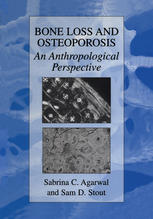

Most ebook files are in PDF format, so you can easily read them using various software such as Foxit Reader or directly on the Google Chrome browser.
Some ebook files are released by publishers in other formats such as .awz, .mobi, .epub, .fb2, etc. You may need to install specific software to read these formats on mobile/PC, such as Calibre.
Please read the tutorial at this link: https://ebookbell.com/faq
We offer FREE conversion to the popular formats you request; however, this may take some time. Therefore, right after payment, please email us, and we will try to provide the service as quickly as possible.
For some exceptional file formats or broken links (if any), please refrain from opening any disputes. Instead, email us first, and we will try to assist within a maximum of 6 hours.
EbookBell Team

5.0
18 reviewsWith the growing incidence of fragility fractures in Europe and North America over the last three decades, bone loss and osteoporosis have become active areas of research in skeletal biology. Bone loss is associated with aging in both sexes and is accelerated in women with the onset of menopause. However, bone loss is related to a suite of complex and often synergistically related factors including genetics, pathology, nutrition, mechani cal usage, and lifestyle. It is not surprising that its incidence and severity vary among populations. There has been increasing interest to investigate bone loss and osteoporosis from an anthropological perspective that utilizes a biocultural approach. Biocultural approaches recognize the inter-relationship between biological, cultural, and environmental variables. Anthropological studies also highlight the value of evolutionary and population approaches to the study of bone loss. These approaches are particularly suited to elucidate the multifactorial etiology of bone loss. The idea for this volume came out of a symposium organized by the editors at the 70th annual meeting of The American Association of Physical Anthropologists in Kansas City, Missouri. Many of the symposium participants, along with several additional leading scientists involved in bone and osteoporosis research, are brought together in this volume. Each chapter focuses on a different aspect of bone loss and fragility with a fresh and stimulating perspective.